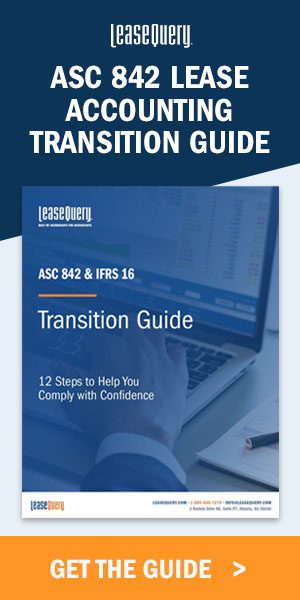This article, "FASB Drafts Update to Make Leases Standard Easier to Prepare," originally appeared on AccountingWeb.com.
The Financial Accounting Standards Board has proposed an Accounting Standards Update that seeks to cut costs and make the leases standard easier for financial statement preparers to put in place.
The FASB has set a Feb. 5 deadline for any comments.
“The proposed ASU is aimed at reducing unnecessary costs around implementation of the new leases standard without compromising the ultimate quality of information provided to investors,” said Russell Golden in a prepared statement. “It’s part of our ongoing effort to proactively address implementation issues raised by our stakeholders to ensure a successful transition to the new standard.”
According to the FASB, the proposed update in Leases (Topic 842): Targeted Improvements seeks to simplify transition requirements and provide lessors with a practical expedient for the separation of non-lease components from lease components.
Here are the key changes — which address numerous inquiries that the FASB has received — that the proposal would make:
1. Add an option for transition to ASU No. 2016-02, Leases (Topic 842), that would permit an organization to apply the transition provisions of the new standard at its adoption date instead of at the earliest comparative period presented in its financial statements.
Entities currently are required to adopt the new lease requirements using a modified retrospective transition method whereby an entity initially applies the new lease requirements (subject to specific transition requirements and optional practical expedients) at the beginning of the earliest period presented in the financial statements (January 1, 2017, for calendar-year-end public business entities that adopt the new lease requirements on January 1, 2019). This means that lessees must recognize lease assets and liabilities on the balance sheet for all leases, and must provide the new and enhanced disclosures, for each period presented (including comparative periods).
But as organizations began to implement the new lease requirements, many preparers have noted unanticipated costs and complexities associated with the modified retrospective transition method, particularly the comparative period reporting requirements, the FASB states in the exposure draft of the proposal. So, those preparers requested an additional (and optional) transition method to use in adopting the new lease requirements.
The board’s proposed additional transition method would change when an entity would have to initially apply the transition requirements of the new standard. However, it would not change how those requirements apply, the FASB stated.
2. Add a practical expedient that would permit lessors to not separate non-lease components from the associated lease components if certain conditions are met. This practical expedient could be elected by class of underlying assets. If it is elected, certain disclosures would be required.
The amendments in the proposal address concerns about the requirement for lessors to separate components of a contract by providing lessors with a practical expedient, by class of underlying assets, to not separate non-lease components from the related lease components, similar to that provided for lessees. However, the lessor practical expedient would be limited to circumstances in which both (1) the timing and pattern of revenue recognition are the same for the non-lease component(s) and related lease component and (2) the combined single lease component would be classified as an operating lease.



